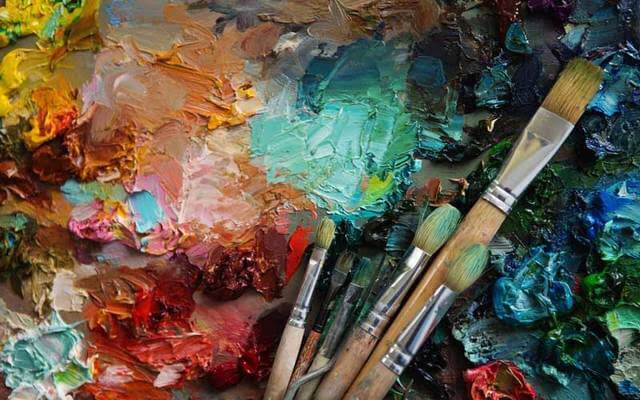Art has been seen as an unprofitable vocation. But in this feature, RAHEEMAH AROGUNDADE tries to quash the myth of the starving artist
A lot of myths revolve around who an ideal artist is, the things they should do or not do to sustain creativity and living their life entirely for art’s sake.
Over the years, the ideology of the starving artist has made artists lose out on subsistence, wealth, technology and other important things in life, all for art’s sake.
Bohemianism
Living solely for art’s sake was the philosophy of the 20th century bohemians, who think that an artist should not create commercial works; rather an artwork should grant them whatever satisfaction they desired in life.
The ideology that art could be a means of sustenance was unacceptable and regarded as odd. All these ideas have been vehemently opposed over time, with people disregarding the myth of the starving artist and highlighting the possibility of making art lucrative.
Art as business
Precious Atoma has a contrary opinion to the bohemians’ ideology of how an ideal artist should starve. According to her, making a living out of art is as normal as making a living off any other job.
“Making money from art is as good as any other positive money-making venture,” she said.
The above view is shared by Kehinde Lawal, who said, “Just like every profession, nothing stops an artist from making money from what they are good at. If creating art is a profession, it should be monetarily profitable. So, it’s good to make money from it.”
From this doctrine springs forth many others, including the idea that the artist should not market their works, making money from art is bad, an artist should not be rich, an artist cannot succeed in business and, more predominantly, starving makes an artist better.
Seun Ayo disagrees with these assertions. For him, being successful is dependent on the particular artist. “Just like we have successful and unsuccessful business persons, an artist may or may not be successful. Success has nothing to do with being an artist, but it has a lot to do with the person.”
Layo Agboola also agrees that restricting success to specific professions is completely wrong. “Succeeding in business has little or nothing to do with your profession; it is about your personality and your business acumen,” she said.
The concept of ‘starved artist’ has denied budding artists and even those practising the opportunity to spread their wings, enjoy their craft and live comfortably, according to arts enthusiasts. Art, they added, is undeniably considered a talent, but one should be able to make a living out of it.
Passion fuels creativity
Disregarding the doctrine that the financial situation of an artist affects his/her creativity, Lawal says, “When passion is the reason for becoming an artist in the first place, creativity never dries out. Though financial constraint may be a challenge, for some artists, challenges ignite creative juice.

“An artist is an artist, whether rich or poor. Agreeing to that impression would mean that when a once poor artist becomes rich, creativity is relegated. That can’t be true.”
Ayo also agrees that creativity has absolutely nothing to do with the financial status of the artist. “To look at this critically, we must look at the artist’s source of motivation. If the artist creates art for financial gains, then financial situation will affect creativity.”
The myth
The myth of the starving artist is limited and sadly propagated in the society. It restricts the freedom of artists and stops them from achieving a lot in life. It also hinders many young artists from exploring the prospects in art because of the perceived impression that artists cannot sustain themselves or their families.
The ‘starved artist’ concept goes deeper to affect societal perception of those in the arts. The fact that many parents prefer their wards to go into more ‘practical’ courses as against those in the arts confirms this. It is already widespread that art is unprofitable; hence younger artists are discouraged even before exploring the opportunities in art.
Enthusiasts here
While suggesting that people’s perception of art is limited, Lawal still believes that there are numerous art enthusiasts in the world.
Her words, “Multitudes out there still appreciate arts and many more people will. It may not be popularly viewed with so much glory like the sciences, but the existence of arts gives life its beauty. The fact that many people fail to acknowledge this doesn’t make it a retardant field.”
Gagging the myth
In a bid to correct these wrong notions about artists and their art, Lawal suggested that artists should invest their time in creating huge impact.
“Artists should focus on making huge impact in the world with their creativity. They should make the world see that what they do isn’t about just the money, but the bliss that comes from creating beauty. The world will be forced to see the beauty as the wealth of an artist,” she said.
In Ayo’s opinion, the best way to redeem the image of artists is by ensuring that every artist adds value to himself. “This is not a collective campaign. Individual artists should add value to themselves and seek better platforms to showcase their works.”
Mofoluwake Adesina urges every artist to strive for excellence and use their uniqueness to raise the standards for themselves. “Artists should work towards being very good at whatever they do, and should not settle for less.”
Get real time update about this post categories directly on your device, subscribe now.



